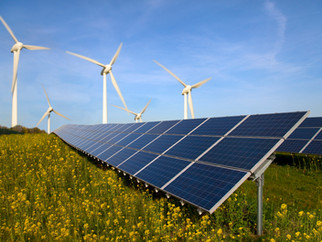A Brief History of Solar Energy:
- Apr 19, 2023
- 4 min read

How Solar Has Been Used and Why You Can Feel Comfortable Investing
So you’re thinking about investing in a solar panel system, but you aren’t sure if you want to try out a “new” technology. Maybe you’ll wait it out a few years to be sure it’s safe, effective, and worth your investment. Well friends, we’re here to set the record straight–solar technology is anything but new. As far as the grand scheme of things on planet Earth goes, sure, it’s new. But when it comes to historical records, harnessing the sun’s power has always had a special place in the lives of us earthlings.
Ancient to Everyday
Humans have been fascinated by the sun’s power and energy since ancient times. We know for certain that Greek, Roman, and Chinese civilizations–arguably some of the heavy hitters in founding how today’s world works–used magnifying glass materials to concentrate the sun’s rays. They lit torches and used these mirrors in religious and sacred ceremonies. (Did they also massacre insects? Can’t be sure…) Plenty of cultures also took advantage of the heat from the sun when planning and designing their structures, and the natural heat gained from a southern exposure influenced Roman bathhouses and Native American cliff-dwellings alike.
Leveraging the natural resources and elements we have in plentiful supply makes sense, too, and plenty of scientists, inventors, and all-around smart folks have been working on solar technology for well over a century. That journey got its start in 1839 France, where a young physicist saw the photovoltaic effect–the same process that works on modern solar panels–for the first time. During the latter half of the 19th century, patents were filed and the first solar-powered devices and gold-coated selenium solar cells were created. In 1883, this technology shows up in New York state and that year marks the beginning of photovoltaic solar panel innovation in the United States.
Did You Know?
The technical term “photovoltaic” basically means to change light energy into electricity and was coined in honor of Italian scientist extraordinaire, Alessandro Volta.
The path to modern commercial, residential, and industrial solar panels continued in various countries across the globe, all with the goal of transforming the sun’s energy into electrical energy and then mechanical energy. To put it simply, folks wanted to use the sun to power our man-made world, much like it does the natural world. And we’re still striving toward that target today. Once thermal batteries were developed, we were one step closer to collecting, storing, and distributing solar energy.
Fast forward to the mid-twentieth century, and researchers at Bell Laboratories discovered that silicon was superior to selenium when creating solar cells, the building blocks of solar panels. During this same era, NASA began to use solar panels to run both a satellite and observatory in space. Cost was still prohibitive for the average consumer, but universities took up the research mantle. In 1973 the University of Delaware constructed one of the first solar buildings, with solar collection being built into the roof itself.
From this point on, the popularity and urgency of further solar development generally waxed and waned with the rise and fall of energy prices and an increasing call for sound environmental measures. Solar panels were even installed on the White House roof in 1979. Said panels were removed in 1981, and eventually replaced in 2010.
In the meantime, inventors and investors were finding ever-expanding ways to use solar technology. A remote-controlled solar airplane and NASA’s 2001 non-rocket aircraft–named for the French scientist who started it all–are perhaps the two most notable of these. Today the International Space Station makes the most use of solar panels in space. These panels are constructed with similar technology to what’s available for commercial, residential, and industrial solar panels down here on Earth, other than being able to handle radiation and extreme temperatures.
In recent years, and the last decade specifically, estimates put solar’s growth rate at about 50% in the US, largely thanks to the Solar Investment Tax Credit of 2006. In light of 2022’s Inflation Reduction Act, we’re expecting another big bump. Combined with affordability, availability, and benefits from Ohio solar incentives, it’s no wonder that our local communities are showing increased interest. Now that we have the best, most efficient, and most durable solar panels available, the goal is to move from interest to installation. This technology is undeniably safe and effective, and it’s so far from being a new idea.
So now we’re back in the present, and it’s high time to start harnessing the sun’s power for yourself, at home, year-round! Thankfully, as all technologies do, solar panel cost has dropped remarkably in the last decade–from roughly $300/watt in the 1950s to only $0.50/watt today.
Call On Solar Connection for Solar Panels in Ohio
After all that backstory, solar panel installation sounds pretty great, right? Technology has improved by leaps and bounds in the last decade alone, and with currently available Ohio solar incentives, it’s also never been more affordable. If you’re ready to make a move and are checking out solar companies in Ohio, look no further than Solar Connection.
Our solar energy experts make the process simple and cater to customers. Whether you’re in the market for solar panels for commercial buildings or your home, our technicians are happy to field your questions. We’ll meet with you on-site, develop a system based on your specific needs and usage, and draft a customized quote with everything outlined. Give our team a call today to discuss available options for solar panels in Ohio–we’re ready to help you own your energy!








Comments